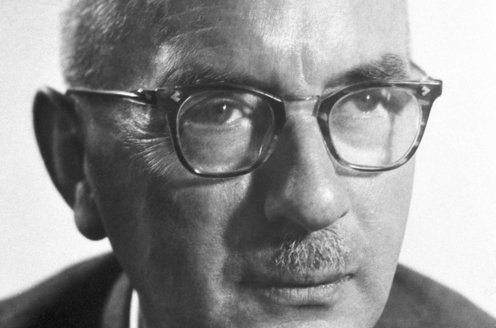The physics Nobel Prize is the top honor awarded to physicists for their scientific discoveries. Physics Nobel laureates win a medal, a diploma, a cash award, and recognition as one of the world’s best scientists.
Physics Nobel Prizes for 1954
The physics Nobel Prize winners for 1954 were:
– Max Born
-Walther Bothe
In 1954 physicists Max Born and Walther Bothe shared the Nobel Prize. Born did fundamental work in understanding quantum mechanical wave functions. Bothe developed the coincidence method for detecting elementary particles.
Max Born
For his Nobel Prize winning work, Max Born built on the work of Erwin Shrödinger. Shrödinger won the 1933 physics Nobel Prize for his quantum mechanical wave equation, but physicists did not completely understand all the interpretations and implications of Shrödinger’s wave equation. Shrödinger’s wave equation represents elementary particles, such as protons and electrons, by a wave function. Born first realized that a particle’s wave function did not predict its exact position and momentum. Rather the wave function predicts the most likely position and momentum for an elementary particle.
Born’s interpretation of Shrödinger’s wave function led to the statistical interpretation of quantum mechanics. It is impossible to exactly predict what any individual elementary particle will do. Using quantum mechanics, however, physicists can predict the statistical behavior of a large number of elementary particles.
Walther Bothe
In his coincidence method of particle detection, Bothe used two particle detectors, rather than just one, to discern if two different particles were detected simultaneously. In 1924, Bothe’s original experiment using this technique tested whether the recoil electrons and the scattered X-rays in Compton scattering experiments were simultaneous.
Bothe used two needle counter detectors, which Hans Geiger developed prior to the more modern Geiger counters. Placed near a Compton scattering apparatus, one needle counter detected the scattered X-rays, the other detected the recoil electrons. Using photographic film to record the detections Bothe could measure coincident particle detections to an accuracy of about 1 ten thousandth of a second (0.1 milliseconds). In his Nobel lecture, Bothe noted that these experiments used so much film that when the developed film was hanging to dry his laboratory “sometimes resembled an industrial laundry.”
Bothe’s 1924 experiments confirmed that in Compton scattering the X-rays and recoil electrons were produced simultaneously.
After this initial experiment Bothe’s coincidence methods were significantly improved and applied to other areas of physics. In 1929 Bothe, working with Werner Kolhörster, showed that cosmic rays were actually energetic particles. In 1930, a young physicist, Bruno Rossi, developed the first electronic coincidence circuit to further study cosmic rays. Rossi’s circuit, built on Bothe’s coincidence technique, eventually led to the AND logic circuit used in modern computers and electronic devices. Nuclear and particle physicists also use modern improvements of Bothe’s coincidence particle detection methods.
Bothe’s Nobel Prize winning work led to much of physicists modern understanding of atomic nuclei and elementary particles. Born’s Nobel Prize winning work was an important contribution to modern physicists understanding of quantum mechanics.









